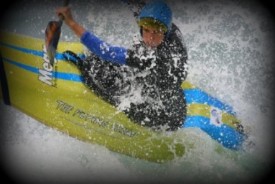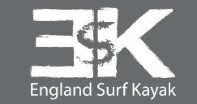How to coach yourself!
"Above all, enjoy your surfing! But think about what you're doing, get some help from a coach or observant friend, see some video of your waves if you can, and you'll surf a little better. When you're surfing better, you'll enjoy it even more"
John Watson England Team Manager
This site is intended to give you some information to help you improve your boating, however you've got to translate this information into your paddling. Grab a pen and a piece of paper and follow these simple steps -
Step 1 - Analyse your current skills
Ask yourself as many questions as you can think of about your surfing, and write down your answers. These might include;
- What do you do well?
- Which bits of your surfing are you really pleased with?
- Think about the best wave you've ever had - What did it consist of?
- Could you replicate it or did it happen by accident!
- What are you currently working on?
- What do you consider to be the areas of weakness in your surfing?
- What size waves do you feel most comfortable on?
- How long can you surf for before you begin to feel tired?
- Which type of wave makes you feel most uncomfortable?
Think about any other questions you can ask yourself, that will result in answers that describe your surfing.
Step 2 - Box your list
You should now see in front of you a list of answers that can be broken loosely down into four boxes. Some of which you do well, and it's really important to recognise these areas, and some which need development.
Technical
In this list place all the things from your answers that have a technical nature, for example bottom and top turns, cutbacks and aerials.
Physical
This is where you place everything that is related to your fitness and mobility, e.g. how long it may take you to recover after paddling out back? Can you rotate equally to both the left and right?
Tactical
In this section write all the items that are based on decision making, e.g. where to paddle out, which waves to ride, what boat set up to use for the wave etc.

Psychological
The final area is set aside for everything to do with your mental state. e.g "I can surf really well in 2 foot but at four foot I can't surf at all". "My skills fall apart when it's busy in the water"
Step 3 - Check the balance of your boxes
You'll probably find that much of your information is written in the technical box, and this is only natural - we quite often assume that in order to get better we have to learn the technical accuracies of a new skill to be able to perform it. However you have to ensure that you have balance across all four boxes to be truly skilful. Despite a thorough understanding of the technical aspects of an aerial for example, it is very difficult to perform if 'tactically' you are riding the wrong type of wave, 'physically' you struggle with explosive type manouveres, or 'psychologically' you are uncomfortable in attacking a lip.
This site can help you with your technical understanding, but it's up to you to ensure that you've balanced the boxes accurately to ensure you're giving yourself the best possible chance of developing your skills.
Coach each other
For almost all of us surfing is a social sport, the opportuntiy to go out and have some fun in the sea with some friends. This has two main advantages:
- There is always somebody on the water who could help you should you get into any difficulties, and
- You are surfing with a potential coach, even if they don't know it yet!
How often have you said to your paddling buddies "Did you see that?" This is an attempt to get external feedback on a skill you have just performed.
External feedback is vital if you are going to progress your surfing. What you think is a near perfect move may look slightly different to an observer. Ask your friends what they are seeing whilst you're surfing, and try to make your questions as specific as possible as this will give you the most useful information - and hopefully something to work on.
Here's an example of how this might work. Whilst working on top turns get your buddy to watch from out back to see how much of your boat becomes visible. None, and the top turn has been executed low on the wave. All three fins visible and it's on its way to becoming an aerial. Having this external feedback can push you into trying harder, and developing your skills quicker.
The camera never lies..............
.....and it does give the most accurate feedback. If you get the chance, have someone video you surfing and watch it back. It's hard to see it all at full speed, so slow it down or pause to see clearly what happens when - how the wave breaks, angle of the boat, movement of your body etc.
Or use the quick-burst feature on a normal digital camera. This freezes the action at several points through a sequence and can be even clearer than video at times.

